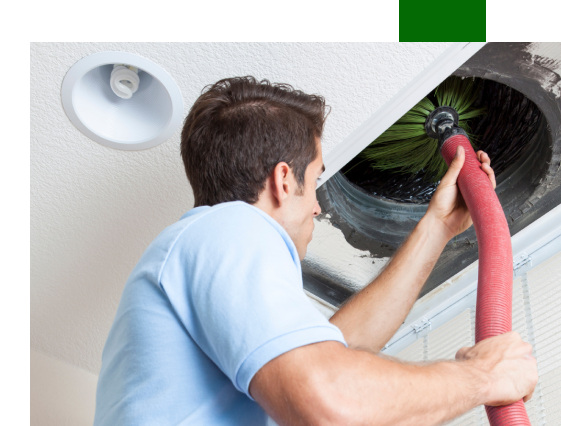A roaring fire may be the heart of your home in winter, but behind every cozy moment is a chimney working hard to safely vent smoke and gases. Unfortunately, this unsung hero is often overlooked—until something goes wrong. That’s why a chimney inspection is not just smart, but essential.
In this article, we’ll explore when and why chimney inspections should be on your calendar, what professionals look for during an inspection, and how keeping up with maintenance ensures safety, efficiency, and peace of mind.
Why Chimney Inspections Are a Must
Fire Safety Starts at the Flue
Each time you light your fireplace, a byproduct of combustion—creosote—builds up along the chimney walls. Over time, this highly flammable substance can ignite, leading to devastating chimney fires. A proper chimney inspection identifies such buildup early, preventing potentially dangerous situations before they escalate.
Even if you don’t use your fireplace often, weather-related damage, nesting animals, or unseen blockages could compromise safety. That’s why inspection isn’t just about cleaning—it’s about proactive fire prevention.
Protect Indoor Air Quality
A damaged or blocked chimney can release smoke, carbon monoxide, and other pollutants into your living space. These invisible dangers can cause serious health issues for you and your family. An annual chimney check ensures harmful gases are safely vented outside, keeping your indoor air clean and breathable.
Avoid Costly Repairs
Catching small issues early is significantly cheaper than dealing with major repairs later. For instance, a cracked liner or deteriorating masonry can be addressed quickly if spotted during a routine check. This not only saves you money but helps extend the life of your chimney system.
Modern tools used in chimney inspection services—like video scanning and diagnostic software—allow for a detailed look at your system, uncovering issues that may be invisible to the naked eye. Many professional services now incorporate such technology as part of a thorough inspection.
When to Schedule a Chimney Inspection
Annual Inspections Are a Must
The National Fire Protection Association recommends that chimneys be inspected at least once a year. This applies even if you use your fireplace occasionally. Regular usage increases creosote buildup, while infrequent use leaves your system vulnerable to animal intrusion and weather damage.
Before Buying or Selling a Home
A chimney inspection is crucial when buying a new home or preparing to sell one. You want to ensure the fireplace is functional and safe. A level 2 inspection is often required during real estate transactions, offering a detailed overview of the chimney’s condition—including hidden damage or structural weaknesses.
After Major Weather Events
Heavy rain, snow, or high winds can damage your chimney’s masonry or crown. If your home has experienced extreme weather, it’s wise to schedule a post-storm inspection. Catching cracks, leaks, or displaced bricks early can prevent water intrusion and long-term structural issues.
If you live in coastal or high-moisture areas, experts recommend seasonal inspections with cleaning options, such as those offered by professional chimney cleaning service providers, to address the unique wear-and-tear caused by salty air and humidity.
What Happens During a Chimney Inspection?
Level 1, 2, and 3 Inspections Explained
- Level 1: The most common type, ideal for regularly maintained systems. A visual check of the chimney interior and accessible parts of the fireplace or stove is conducted.
- Level 2: Required when changes are made to the system (like switching fuel type), after a house sale, or if there’s been weather damage. It includes video scanning of the flue and a more in-depth look at the structure.
- Level 3: The most extensive, usually done when serious issues are suspected. It may involve removing parts of the chimney or surrounding walls to inspect hidden areas.
Technology Enhances Accuracy
Today’s chimney inspections are aided by advanced tech tools. Infrared imaging, live camera feeds, and even drone-assisted visuals are becoming common. Many professionals use platforms like this one to offer clients a digital report with images, videos, and a breakdown of recommended actions.
Clear Reporting and Next Steps
Once the inspection is complete, homeowners receive a detailed report outlining findings and next steps. If cleaning, repairs, or component replacements are needed, you’ll have the data to make informed decisions quickly.
FAQs
Q: How long does a chimney inspection take?
Most inspections take between 30 minutes to an hour, depending on the level and the system’s condition.
Q: Can I inspect my own chimney?
Basic checks are possible, but only certified professionals can conduct comprehensive inspections with the proper tools and safety precautions.
Q: Do gas fireplaces require inspections too?
Yes. Even though gas burns cleaner, blockages, wear and ventilation issues still require annual checks.
Q: What are the signs my chimney needs urgent inspection?
Smoke backdrafts, strange odors, visible creosote, or cracking sounds when using the fireplace are all red flags.
Q: Is it better to schedule an inspection before winter?
Absolutely. Late summer or early fall is ideal, ensuring your chimney is ready before the burning season begins.
A chimney inspection isn’t just a box to check—it’s a vital part of home maintenance that protects your health, safety, and investment. Whether you’re preparing for winter or just moved into a new home, don’t overlook the importance of regular inspections. Prioritize your peace of mind by scheduling one today.




